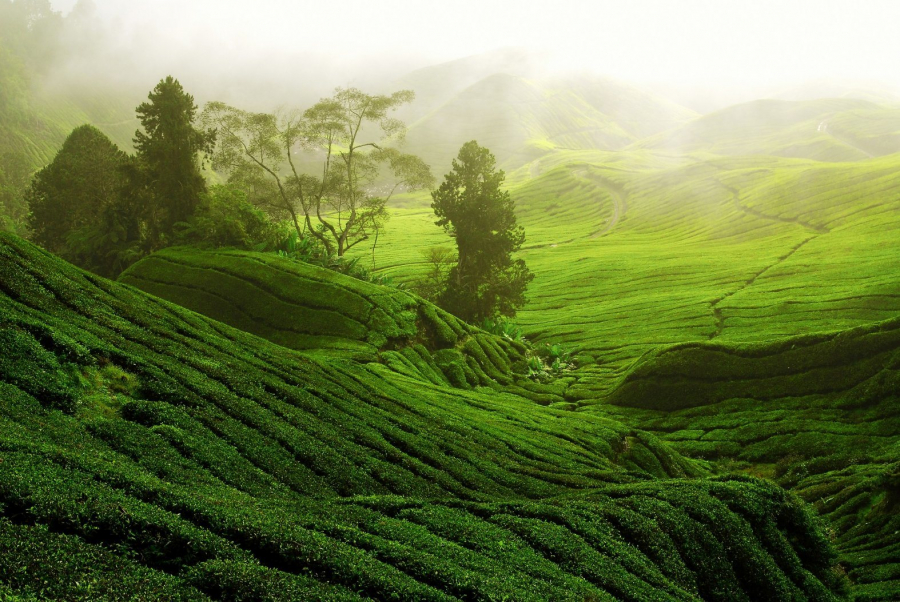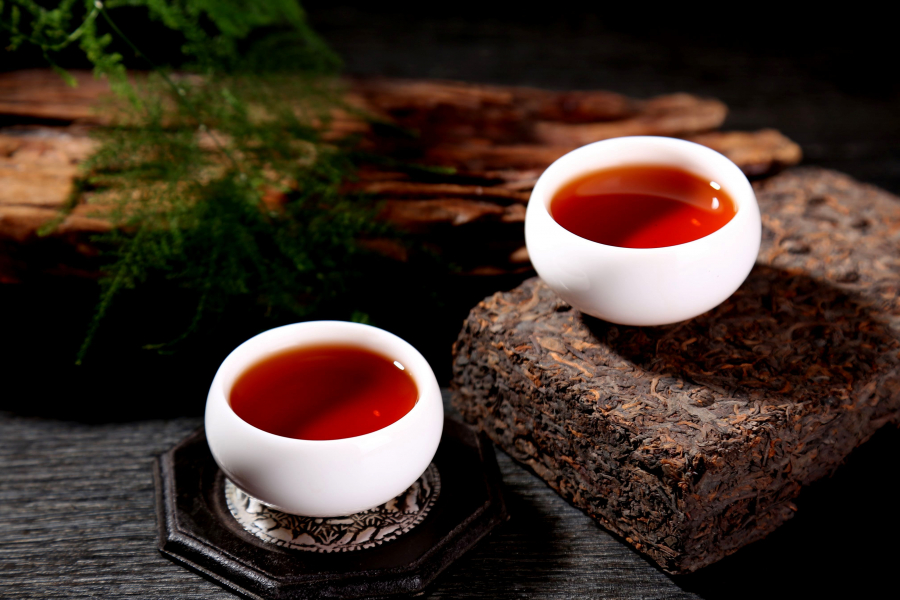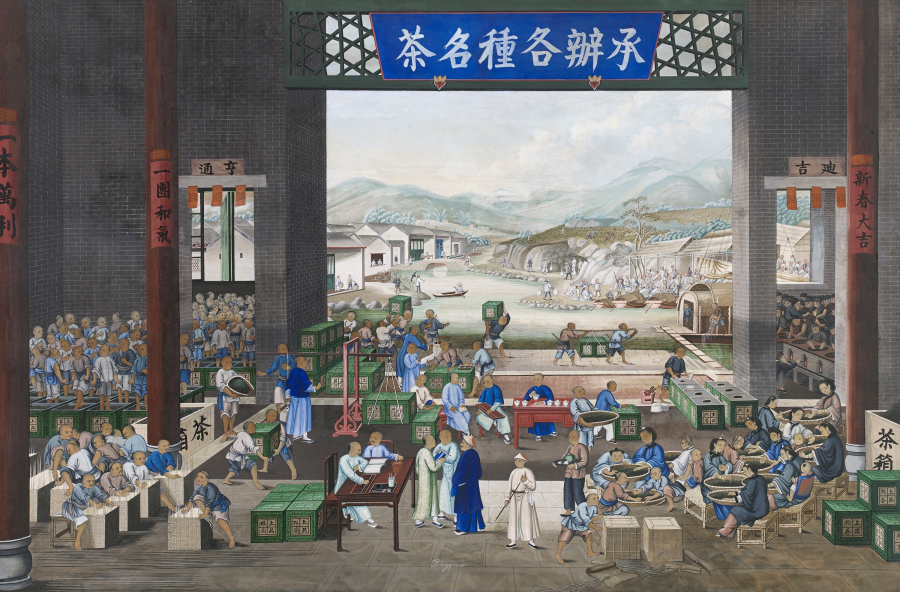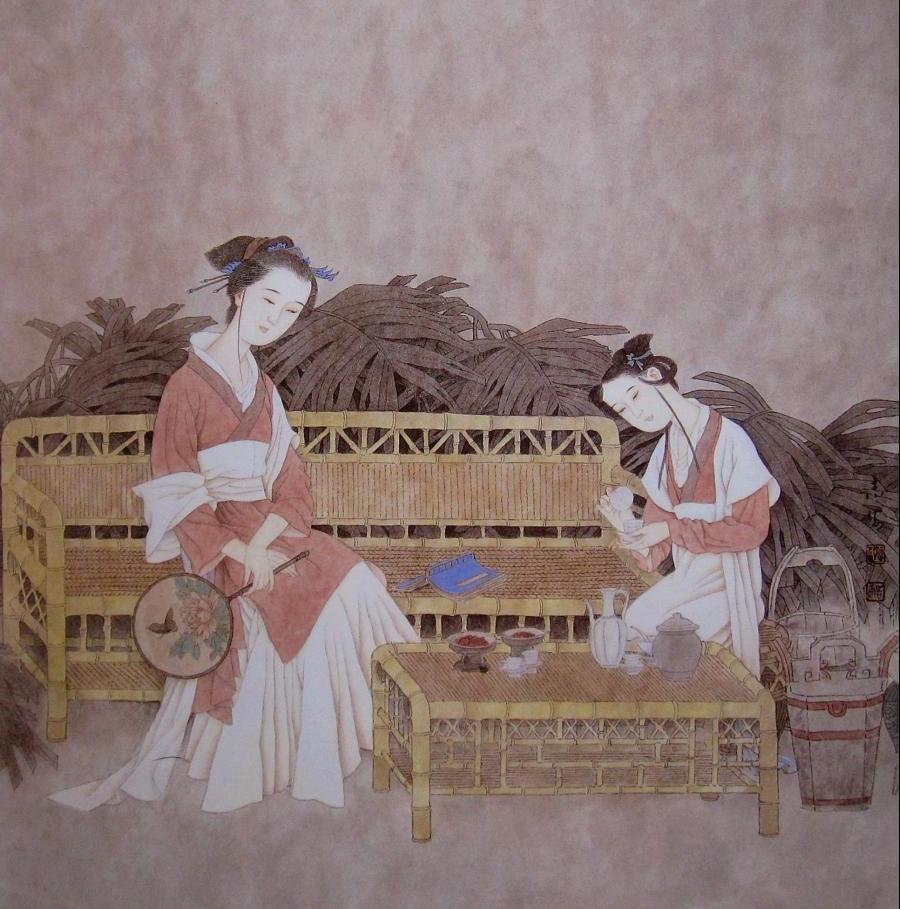Tea and its influence on China
Tea is said to have first appeared in China, with legends that Shennong was the first god to taste and widely cultivate tea. All tea leaves in the world originate from the Camellia Sinensis plant and were dropped into boiling water by the ancient Chinese, then gradually formed different tea processing methods.

Tea is believed to have first appeared in China.
The Chinese have used tea for medicinal purposes since the early 4th century. Since the 4th century, they have been drinking tea as a therapy and to increase resistance. During the Tang Dynasty, tea developed strongly and there was a whole book about the importance of tea. That book isTea Sutraby tea master Luc Vu. The book describes everything about tea, from its origin to how to grow it…, almost the first tea dictionary of mankind.
During the Song Dynasty, Emperor Huizong furthered the power of tea by dedicating his life to the study of tea. He also published a book calledTea Discussionto promote tea, not only to the people in the capital but also to the whole country.
In particular, during the Song Dynasty, tea was considered a substitute for currency. With more than one cake of tea, you can easily exchange for a lot of cloth, silk, and even good horses. The Mongols and Tibetans were crazy about tea. They were willing to give their strongest horses just to exchange for a cake of tea weighing more than an ounce (about 28.3495 grams).
An ounce of tea was worth two ounces of gold at that time. The freshest and best quality tea buds were always presented to the king, auctioned, and sold to the nobility. The importance of tea is undeniable.

Before the Ming Dynasty, the Chinese invented a way to compress black tea into cakes for easier storage and transportation. These cakes were called "tea bricks" (茶磚), which the English roughly translated as "tea bricks".

A painting by Ting Quan depicting tea production in China, 19th century.
Tea picking girl
Tea picking girls have always been a very poetic image in both poetry and painting. In fact, the trend of recruiting tea picking girls is making a strong comeback nowadays.
This trend actually originated a long time ago, all the way back to the Tang Dynasty. With the love and passion for tea, the forms that were born from this also flourished. The high-class teas picked by young girls were always given their own names and were carefully preserved.

The girls are learning how to make tea.

Enjoy tea with friends.
The best tea buds are always picked by young girls. If not offered to the king, good tea is sold at a "throat-cutting" price. These girls are young, innocent and not too plump. Because the concept of high-class tea connoisseurs is that tea must be truly pure, not only from the brewing stage but also from the smallest steps.
Tea is usually picked in April every year. Young girls are sent up the mountain slopes early, where they spend a warm spring preparing for a steady tea harvest.
Early in the morning, when the sky was still misty, the young girls got up quickly, bathed and ate a light breakfast. The breakfast consisted of a little rice, tofu and vegetables, very limited meat and fish, especially onions and garlic. They would have to maintain this state until the end of the tea harvest. Because according to the supervisors' concept, tea must not contain the heavy breath of people who eat fishy substances, proteins, strong-smelling spices...
After eating, the girls with young and innocent faces, carrying small baskets woven from willow branches hanging from their necks, and wearing gloves on their hands, set off along the winding slopes, chatting and laughing while watching the clouds and sky. A good mood is needed to find the best tea leaves.
Small hands wearing pure white gloves gently and skillfully plucked each tea leaf. They absolutely could not use their fingernails or pull the tea leaves because that was disrespectful to the tea. Tea plants that oozed sap because of sharp nails would not produce the best tea buds. They picked the youngest, smallest and most beautiful buds for the king. Next were the larger buds for the mandarins and nobles. They absolutely could not pick the entire tea branch because they could not let the tea crumbs and dust from the lower layers fly into their small baskets.
In some more strict places, young girls, after picking tea leaves, immediately put them in their chests and armpits and take them out the next morning. This strange action is explained to help the tea have a unique flavor from the virgin's sweat. From then on, the tea leaves become delicious and outstanding, no other tea can compare.

From picking tea leaves...

...to dry, roast and bake the leaves.
Tea is only picked when the dew is still on the leaves, and the sunlight is still very thin and sparse. The tea leaves at this time are pampered to the extreme. After noon, the picked tea is only second or third class, not worth mentioning. When the sun rises, the girls hurry home to avoid the tea buds from evaporating dew and drying out in the sun. The tea is cherished, held in soft hands like a priceless commodity.
By noon, the tea leaves are dried, roasted, or dried to wither them. High-quality tea is usually processed quickly to reach the king or nobles, but tea for the king cannot be left until the next day.
Follow the tea bud to the Emperor's table
The tea offered to the emperor often came from the Yang Hsien Mountains in the Shanghai area. The tea here was so excellent that the emperor demanded a certain amount of tea as tribute during the rice harvest in April each year. During the month of tea tribute, rice production was disrupted, leading to a terrible famine.

The royal tea ceremony is also more complicated, strict and meticulous than anything else.
The royal family had strict requirements for tea, from picking to production. The tea was not left for too long but had to be delivered to the king immediately. The person making the tea was also very meticulous, using the purest morning dew water and cool rainwater. The teapot had to be made of celadon-coated ceramic. The smooth, transparent glaze made the tea more shimmering.
So many requests, all for a cup of good tea. If given the opportunity to drink such a cup of tea, I would certainly raise my glass with great honor.
Tea in modern times
Nowadays, the pace of development and modernity has shortened and simplified the process of enjoying and drinking tea a lot. From ceremonies that can last for hours or even weeks, or banquets with rare and luxurious tea boxes, they have been compactly transformed into a simple tea bag. We just need to pour boiling water, wait a few minutes and have a cup of hot tea. The strict habits and requirements of tea are only in places specializing in tea, and are no longer widespread like before. The tradition of picking tea by girls has also somewhat faded away.
In China today, it is very difficult to find a pound of good royal-style tea, carefully nurtured by virgins. But it is not impossible. Recently, a company in Henan posted a notice recruiting young, energetic girls with even large breasts to pick tea to make the famous Virgin Tea. This event caused a stir in public opinion for a while, but it is not too strange, as tea and everything about tea is a long-standing tradition, deeply ingrained in the subconscious of the people of this country.































